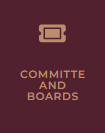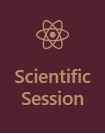Management of Xerostomia and Hyposalivation in Hypertensive Patient's Using Candesartan Cilexetil
DOI:
https://doi.org/10.18196/imunity.v1i1.14Keywords:
candesartan cilexetil, hypertension, dry mouth gel, salivary flow rateAbstract
Saliva’s disorder and dry mouth (xerostomia) are related to routine medication as antihypertensives. Candrsartan cilexetil is an angiotensin receptor blocker (ARB) hypertension drug that indirectly affects saliva by changing fluid and electrolyte balance. To examine the management of xerostomia and hyposalivation in hypertensive patients due to use of candesartan cilexetil. A 70 year old female patient complained her mouth felt dry since 1 year ago when she was diagnosed with hypertension. The patient consumes candesartan cilexetil once daily, 8 mg. Intra oral showed were edentulous areas on the entire upper and lower jaw with the patient's oral mucosa being dry, saliva thick, sticky and frothy. In this case, saliva’s rate measurement showed a result of 0.16 mL/minute. After intervention using dry mouth gel for two weeks, a saliva rate of 0.38 mL/minute. During the control, patient didn’t complaining dry mouth. This is accordance with the literature, dry mouth gel can improve signs and symptoms of dry mouth and increase the patient's ability to swallow. Patient’s take antihypertensive drugs have manifestations in form of xerostomia. The treatment carried out to improve the condition of patient's oral cavity is providing education on maintaining healthy teeth and mouth as well as using dry mouth gel applied to the entire oral mucosa. In this case, an increase salivary rate from 0.16 mL/minute to 0.38 mL/minute. The concluded, use of dry mouth gel is effective in treating xerostomia and can increase the rate of saliva in the oral cavity
References
Ristevska, I. Xerostomia: Understanding the Diagnosis and the Treatment of Dry Mouth. J. Fam. Med. Dis. Prev. 1, 1–5 (2015).
Asmi Usman, N. & Hernawan, I. Tata Laksana Xerostomia Oleh Karena Efek Penggunaan Amlodipine: Laporan Kasus. Insisiva Dent. J. Maj. Kedokt. Gigi Insisiva 6, (2017).
Rafika, M., Wahyuni, I. S. & Hidayat, W. Penentuan Laju Alir Saliva Pada Pasien Geriatri Sebagai Pertimbangan Manajemen Komprehensif Pada Stomatitis Herpetika. B-Dent J. Kedokt. Gigi Univ. Baiturrahmah 5, 144–152 (2019).
de Mendonça Guimarães, D. et al. Xerostomia and dysgeusia in the elderly: prevalence of and association with polypharmacy. Brazilian J. Oral Sci. 22, 1–12 (2023).
Osailan S, Pramanik R, Shirodaria S, Challacombe SJ, P. G. Investigating the relationship between hyposalivation and mucosal wetness. Oral Dis 17(1), 109–114 (2011).
Villa, A., Connell, C. L. & Abati, S. Diagnosis and management of xerostomia and hyposalivation. Ther. Clin. Risk Manag. 11, 45–51 (2014).
Fandinata, S. S., & Darmawan, R. (2022). Perbandingan Angiotensin II Receptor Blocker Candesartan vs Termisartan vs Valsartan pada Monitoring Tekanan Darah Pasien Chronic Kidney Disease. Jurnal Penelitian Kesehatan" SUARA FORIKES"(Journal of Health Research" Forikes Voice"), 13(1), 58-63..
Gunawan, S. G., Setiabudy, R., & Nafrialdi, E. Farmakologi dan Terapi edisi 5. (Departemen farmakologi dan terapeutik FKUI, 2007).
Supit, K. Y., Wowor, V. N. S. & Mintjelungan, C. N. Hubungan Penggunaan Obat-obatan Antihipertensi dengan Terjadinya Xerostomia. e-GiGi 11, 9 (2022).
Momuat, A. G. F. & Annisaa’, E. Evaluasi Rasionalitas Penggunaan Antihipertensi Golongan Angiotensin II Receptor Blocker (ARB) pada Pasien Penyakit Ginjal Kronis. Generics J. Res. Pharm. 3, 55–64 (2023).
Ayuningtyas, N. D., Febrianto, Y. & Lutfi, T. Orally Disintegration Tablet (ODT) Formulation of Candesartan Cilexetil With Croscarmellose Sodium and Crospovidone as Superdisintegrant. J. Farm. Sains Indones. 4, 21–28 (2021).
Korespondensi, A. & Cherub, J. Tinjauan atas Angiotensin Receptor Blocker Generasi Baru. 47, 715–718 (2020).
Hersh, E. V., Wolff, M., Moore, P. A., Theken, K. N. & Daniell, H. A Pair of “ACEs”. J. Dent. Res. 101, 5–10 (2022).
Teoh L, Moses G, M. M. A review and guide to drugassociated oral adverse effects-dental, salivary and neurosensory reactions. J Oral Pathol Med 48, 626–36 (2019).
Martínez-Acitores, L. R. et al. Xerostomia and salivary flow in patients taking antihypertensive drugs. Int. J. Environ. Res. Public Health 17, 1–16 (2020).
Tumengkol, B. Gambaran Xerostomia Pada Masyarakat Di Desa Kembuan Kecamatan Tondano Utara. e-GIGI 2, 1–8 (2014).
Nuchit, S. et al. Alleviation of dry mouth by saliva substitutes improved swallowing ability and clinical nutritional status of post-radiotherapy head and neck cancer patients: a randomized controlled trial. Support. Care Cancer 28, 2817–2828 (2020).







